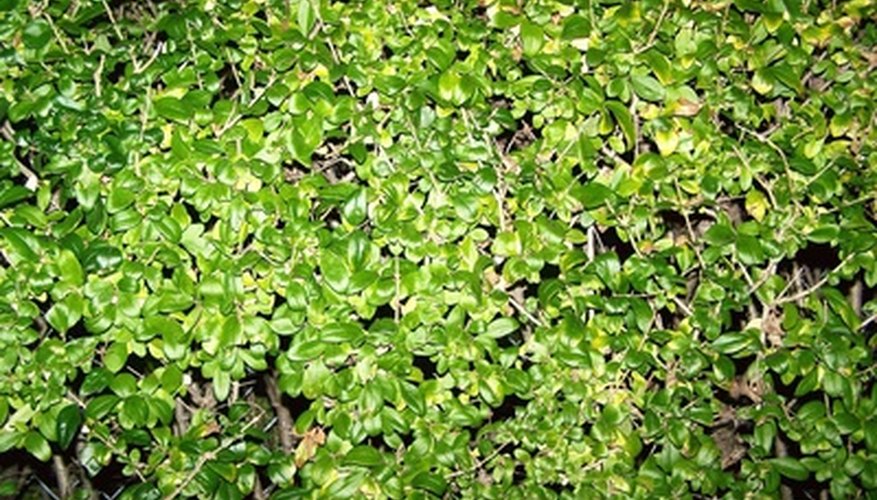Privets are shrubs and trees that belong to the Ligustrum genus. These popular, inexpensive landscaping plants grow rapidly and are used as borders, hedges or patio trees. With proper treatment, privet plants can usually recover from any of the fungus, mould or mildew diseases that are prone to attack.
Powdery Mildew
Powdery Mildew is a grey to dusty white coating found on many parts of a privet, including leaf surfaces. It appears as powdery, white spots which can be removed by scraping.
This fungus causes leaves to drop and show signs of poor growth. Shade, high humidity and densely packed plants encourage fungus growth. Fungicides are effective at treating powdery mildew; read the label to ensure that the fungicide you purchase is intended for use on privets.
- Powdery Mildew is a grey to dusty white coating found on many parts of a privet, including leaf surfaces.
- This fungus causes leaves to drop and show signs of poor growth.
Anthracnose
Anthracnose diseases can infect fruits, leaves, branches and stems of several varieties of shrubs and trees. Privet is one variety of shrub especially susceptible to this fungus.
Wet spring weather with extended cool periods encourages more fungi infection in plants. This disease has been found predominately throughout the eastern portion of the United States.
Anthracnose destroys tissue cells and can distort new growth or kill it completely. In most cases, defoliation occurs followed by a second growth of leaves that may be deformed. Destroying infected portions of the plant and using fungicides can provide control for this disease.
- Anthracnose diseases can infect fruits, leaves, branches and stems of several varieties of shrubs and trees.
- Destroying infected portions of the plant and using fungicides can provide control for this disease.
Sooty Mould
Many shrubs and trees are targets for sooty mould. This is a charcoal-coloured black fungus found on branches, twigs, fruits and leaves. Whiteflies, scale, mealy bugs and aphids deposit a clear, sticky residue called honeydew on privet plants. Sooty mould spores travel on the wind and attach themselves to the honeydew. The spores germinate and infect the plant, which shows up as discoloured tissues. The mould can be washed off plants, but to prevent a continuous cycle of infestation apply a pesticide to kill the insects.
- Many shrubs and trees are targets for sooty mould.
- The mould can be washed off plants, but to prevent a continuous cycle of infestation apply a pesticide to kill the insects.
Leaf Scorch
Leaf scorch can be caused by several situations including drought conditions, limited root space, nutrient deficiencies and transplanting. It frequently occurs during the hot months of July and August with newly planted trees or shrubs. The roots cannot supply enough moisture to leaves that have lost too much water, usually from hot, dry winds.
- Leaf scorch can be caused by several situations including drought conditions, limited root space, nutrient deficiencies and transplanting.
- The roots cannot supply enough moisture to leaves that have lost too much water, usually from hot, dry winds.
Leaves on privets become brown, wither and die. Apply a good multipurpose fertiliser and saturate the soil with a slow-soaking at least 6 inches deep below the surface of the soil.
Honey Fungus
Honey fungus is a parasite that feeds on roots and live or dead plants. Symptoms include poor health, discoloured leaves, unusually small fruit or abnormally large blossoms. Honey fungus resembles mushrooms, growing in a fan-shape along the base of the plant. Dark brown rhizomorphs are found next to roots and white mycelium will appear under the bark, smelling like mushrooms. It spreads to other plants by root contact. The entire plant, including roots, must be burnt to prevent contamination to other nearby plants.
- Honey fungus is a parasite that feeds on roots and live or dead plants.
- Dark brown rhizomorphs are found next to roots and white mycelium will appear under the bark, smelling like mushrooms.
